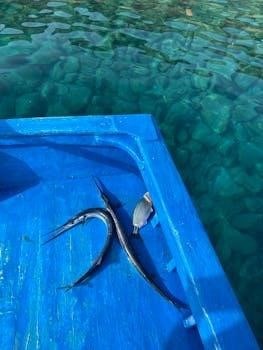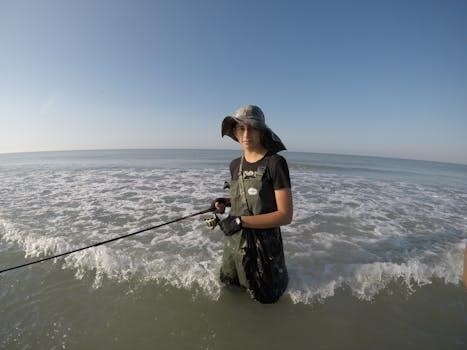Turkey trapping is a valuable method for wildlife management․ It involves techniques to capture wild turkeys for relocation, research, or conservation purposes․ Effective trapping requires understanding turkey behavior and using the appropriate methods․
Understanding the Basics of Turkey Trapping
Successful turkey trapping hinges on comprehending their habits and behaviors․ Turkeys are creatures of habit, often frequenting areas with reliable food sources․ They have good eyesight and are wary of unfamiliar objects․ Understanding their daily routines, like feeding patterns and roosting locations, is essential for effective trap placement․ Baiting is often crucial, using foods turkeys are familiar with․ The goal is to lure them into an area where they can be safely captured․ Trapping success requires patience, careful planning, and a knowledge of turkey behavior․ Different trapping methods exist, each with its own advantages and disadvantages, requiring different setups․ Selecting the most suitable trap and method for a specific location and situation is key․ Also understanding how turkeys react to different types of enclosures is important in the selection process; Camouflage is very important, the trap must blend into it’s surrounding environment․

Common Turkey Trapping Methods
Various methods exist for trapping turkeys, including funnel traps, rocket nets, and drop nets․ Each technique has its specific applications, effectiveness, and logistical requirements for successful capture․
Funnel Traps⁚ Design and Usage
Funnel traps are a popular choice for capturing turkeys due to their simple design and effectiveness․ These traps feature a series of panels that gradually narrow down to an entrance, creating a funnel shape that guides turkeys into an enclosed area․ The design often utilizes mesh or netting with a recommended size of around 2 inches to prevent turkeys from escaping․ Funnel traps are typically baited with feed to attract turkeys․ The trap’s entrance is wide enough to allow the turkeys to enter but narrow enough to hinder their exit․ These traps are effective for capturing multiple birds at once․ Careful placement and camouflaging are key to successful usage․ It is essential to check the traps regularly to ensure the humane handling of the captured turkeys․ When not in use, it is important to close the funnel entrances․
Rocket and Cannon Nets for Turkey Capture
Rocket and cannon nets are utilized for capturing large flocks of turkeys simultaneously․ These methods involve deploying a large net over a baited area using rockets or cannons․ The nets are strategically placed in open areas along the turkeys’ travel paths․ Pre-baiting the sites with corn or sorghum encourages the turkeys to gather in the designated area․ When a sufficient number of turkeys are present, the rockets or cannons are triggered, launching the net over the birds, capturing them․ These techniques are effective for mass captures and are typically employed by wildlife professionals․ It is important to use these methods with caution and proper training to avoid harming the turkeys․ These nets are a highly efficient and effective method for trapping large groups of turkeys at once․ Careful planning and execution are necessary for successful deployment․
Drop Net Traps⁚ Construction and Deployment
Drop net traps are another effective method for capturing turkeys, typically involving a large net suspended above a baited area․ The net is held up by a frame or support system, and a trigger mechanism releases the net when turkeys enter the trap zone․ Construction typically involves using durable materials for the frame and a strong, fine mesh net․ Deployment requires careful planning to ensure the net falls evenly and completely․ The area under the net is pre-baited with corn or other attractants to lure the turkeys in․ Drop nets are a good option for capturing multiple birds at once, and they are especially useful in areas where turkeys are known to congregate․ Proper construction and trigger mechanism sensitivity are critical for the trap’s success and the turkeys’ safety․ These traps are a valuable tool for turkey management․

Trap Setup and Baiting Techniques
Effective trap setup involves careful placement and camouflage․ Baiting is crucial, using attractants like corn or sorghum․ Proper baiting and trap concealment are essential for successful turkey capture․
Choosing the Right Bait for Turkeys
Selecting the correct bait is paramount for successful turkey trapping․ Turkeys are attracted to a variety of foods, but certain options prove more effective․ Corn, both white and yellow, is a widely used and highly effective bait due to its visibility and appeal․ Sorghum also serves as a great attractant, often used in conjunction with corn․ Pre-baiting the area with these grains encourages turkeys to visit the trap location regularly, increasing the chances of capture․ It’s important to scatter the bait in a way that leads turkeys towards the trap’s entrance, rather than directly inside, ensuring the birds enter the trap willingly․ Utilizing decoys can further enhance the effectiveness of the bait by creating a sense of safety and normalcy for the turkeys․ The key is to provide a consistent and enticing food source that draws turkeys into the trapping area․
Camouflaging Traps for Effective Catch
Effective camouflage is crucial for successful turkey trapping․ Turkeys possess excellent eyesight and are easily spooked by anything unnatural․ Therefore, blending the trap into its surroundings is essential․ Use natural materials like branches, leaves, and grasses to break up the trap’s outline․ Avoid shiny or reflective materials that can draw attention․ The goal is to make the trap appear as a natural part of the environment․ Pay close attention to the trap’s entrance, ensuring it doesn’t stand out․ Position the trap in an area where it naturally blends in, ideally near existing cover․ Avoid disturbing the surrounding area too much during setup, as this can also alert turkeys․ The key is to make the trap practically invisible to the birds, allowing them to approach without suspicion, ultimately enhancing the likelihood of capture․

Legal and Ethical Considerations
Turkey trapping necessitates strict adherence to regulations and permits, varying by location․ Humane handling practices are essential, ensuring minimal stress and injury to the captured birds throughout the entire process․
Regulations and Permits for Turkey Trapping
Before engaging in any turkey trapping activities, it is crucial to thoroughly research and understand the specific regulations and permitting requirements in your area․ These laws are designed to ensure the sustainable management of wild turkey populations and to prevent any unethical or harmful practices․ Regulations often vary significantly between states and even within different regions of the same state․ They may cover aspects such as the types of traps that are allowed, the seasons during which trapping is permitted, the number of birds that can be captured, and reporting requirements for trapped animals․ Obtaining the necessary permits is essential, as operating without them can lead to significant legal penalties, including fines and even imprisonment․ Always contact your local wildlife agency to acquire the most accurate information․ It is your responsibility to stay informed of the most current laws and guidelines․
Humane Handling of Trapped Turkeys
The ethical treatment of trapped turkeys is paramount, and every effort should be made to minimize stress and potential harm to these birds․ Once a turkey is captured, it is important to approach the trap calmly and quietly, avoiding any sudden movements or loud noises that could further agitate the animal․ The turkey should be removed carefully from the trap, supporting its body to prevent any injury․ If the turkey is to be relocated, it should be placed in a transport container that is well-ventilated and provides adequate space․ Never leave a trapped turkey unattended for an extended period of time․ It is crucial to adhere to time limits on how long turkeys remain in closed traps, usually no more than 20 minutes․ Immediate release or transfer is needed․ Always handle the turkeys with care and respect to ensure their well-being․ Trapping operations should be conducted in a way that prioritizes the safety and health of the animals involved․

Additional Tips for Success
Success in turkey trapping involves scouting for high activity locations and timing efforts appropriately․ Familiarizing oneself with local regulations and using the right trap design are also crucial․
Scouting for Ideal Trapping Locations
Identifying prime locations is crucial for successful turkey trapping․ Look for areas with high turkey activity, such as places where they frequently feed or roost․ Pre-baiting sites with corn or sorghum can encourage turkeys to visit, making it easier to determine their travel paths․ Observe the terrain for open areas along these paths, as these are ideal for setting up traps․ Consider using observation blinds or natural cover to remain undetected while scouting․ Automobiles parked at a distance can also serve as temporary blinds․ It is important to note areas where turkeys are most comfortable and tend to congregate․ By carefully scouting and identifying these key areas, trappers significantly increase their chances of success․
Timing Your Trapping Efforts
Timing is a critical factor in successful turkey trapping․ The most effective times for trapping are typically from pre-dawn until about three hours after sunrise, and again from approximately three hours before sunset until dark․ These periods coincide with peak turkey activity, such as when they are moving to and from roosting areas or foraging for food․ Avoid trapping during midday when turkeys are less active․ Consistent timing is essential for establishing a pattern and increasing the chances of a successful catch․ It is also important to be mindful of any local regulations that might specify allowable trapping times․ By carefully timing your trapping efforts, you can optimize the likelihood of capturing turkeys․
